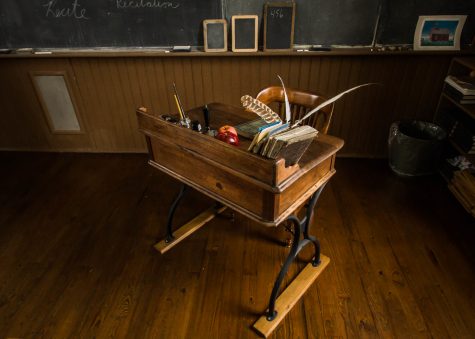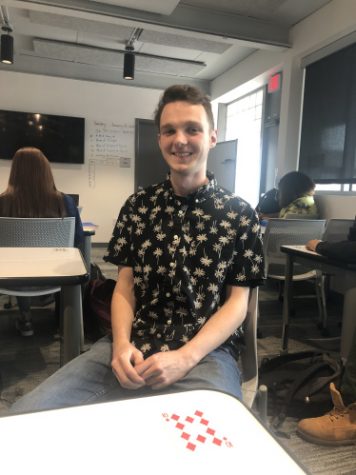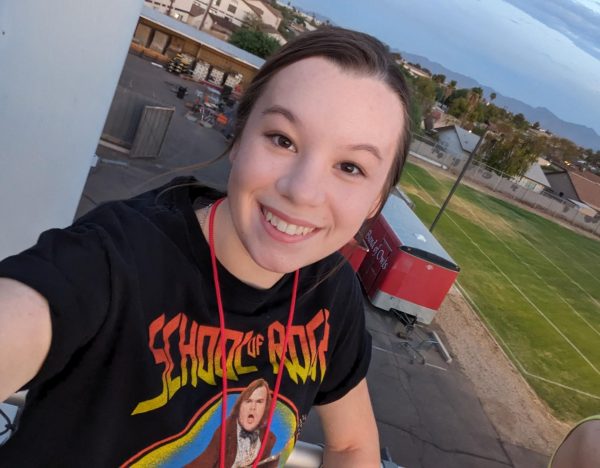OPINION: Empty Classrooms — Arizona’s Teacher Shortage
February 27, 2020
Arizona’s education system has an issue, not with students, but with teacher retention. Many teachers in Arizona and even at Agua Fria don’t stay long enough to get the experiences they need and end up stranding students without proper education.
I have seen many teachers throughout my high school career come and go and it seems that it’s not just myself who sees this, but many other students feel the same way.
Arizona is considered one of the worst states nationwide when it comes to education and part of the reason is the fact that Arizona has frequent teacher shortages.
This harms students the most as it makes it hard to have consistent learning when there’s a new teacher every year or so. These teachers are not as experienced as teachers in other states due to a lack of experience.
Not only does this harm students, but it also harms other teachers who do stay and have to adjust accordingly to new employees or absent spots.
According to the ASU Morrison Institute, which did a study on “Finding & Keeping Educators for Arizona’s Classrooms,” a staggering 74% of Arizona schools reported having teacher shortages. Another statistic that comes from this study is that, on average, elementary teachers in Arizona have the lowest pay in the country, along with high school teachers being paid the second least.
ASU Morrison Institute also found that 42% of teachers who were hired in the year 2013 had quit teaching entirely within the next three years.

Ms. Johnson, who has taught English for 10 years and has been at Agua Fria for seven, explained that there are multiple factors contributing to teacher absences. “If it was just salary, they could fix it by paying teachers more money….but the reality is that we have language barriers, we have school funding issues, we have pushback from local government in investing,” Ms. Johnson said. She further explained that expectations and situations shift from all the different types of factors that contribute to teacher departures.
Ms. Mowbray, an Agua Fria sports medicine teacher with a 15-year tenure, stated that some of the issues stem from low pay and the workload that comes with teaching. “It tends to frustrate people. The first couple of years can be very frustrating and educators don’t always see the payoff of teaching and get out because of it,” she said.
With the changing environment, Johnson said, “You don’t give a 50% turnover rate with one or two factors being a problem.”
These problems are very complex but do need attention to be able to be fixed. One of the movements to try to fix these problems includes the Red for Ed movement that happened around 2018 in which many teachers staged a walk-out. Teachers across the nation left their classrooms and took to the streets to demand better learning environments and funding for schools from the state government.
Johnson said one of the ways Arizona can improve is to build upon the learning environment. “The state needs to invest more in our buildings” to help put teachers in better surroundings, she said.
Johnson believes that citizens of voting age need to be active in politics and support representatives that want to further improve education and funding for it. She encourages them “to elect officials who are interested in funding public schools appropriately, to elect officials who see reform that favors teachers and students instead of private corporations.”
Ms. Mowbray believes, “Teachers need to have relationships with students to get a good education . . . and to get consistency and to be successful.” If teachers stay they can learn about their students and find out the most effective ways to teach them.
Ms. Mowbray and Ms. Johnson both believe that the state has to enact changes to better schools. Ms. Mowbray said she is lucky to be a Career Technical Education teacher. She also benefits from making her own agenda and not basing it on other teachers.
Ms. Johnson said that adjusting to new teachers in English is hard because they are exposed to different experiences every year. It makes it hard for her to rely on going back to lessons as some of the subjects they were not taught.
Whether it’s the state or local level, Arizona has education issues and it all starts at the roots with the teachers themselves. They need better resources to teach and more support from not only students but officials as well.




